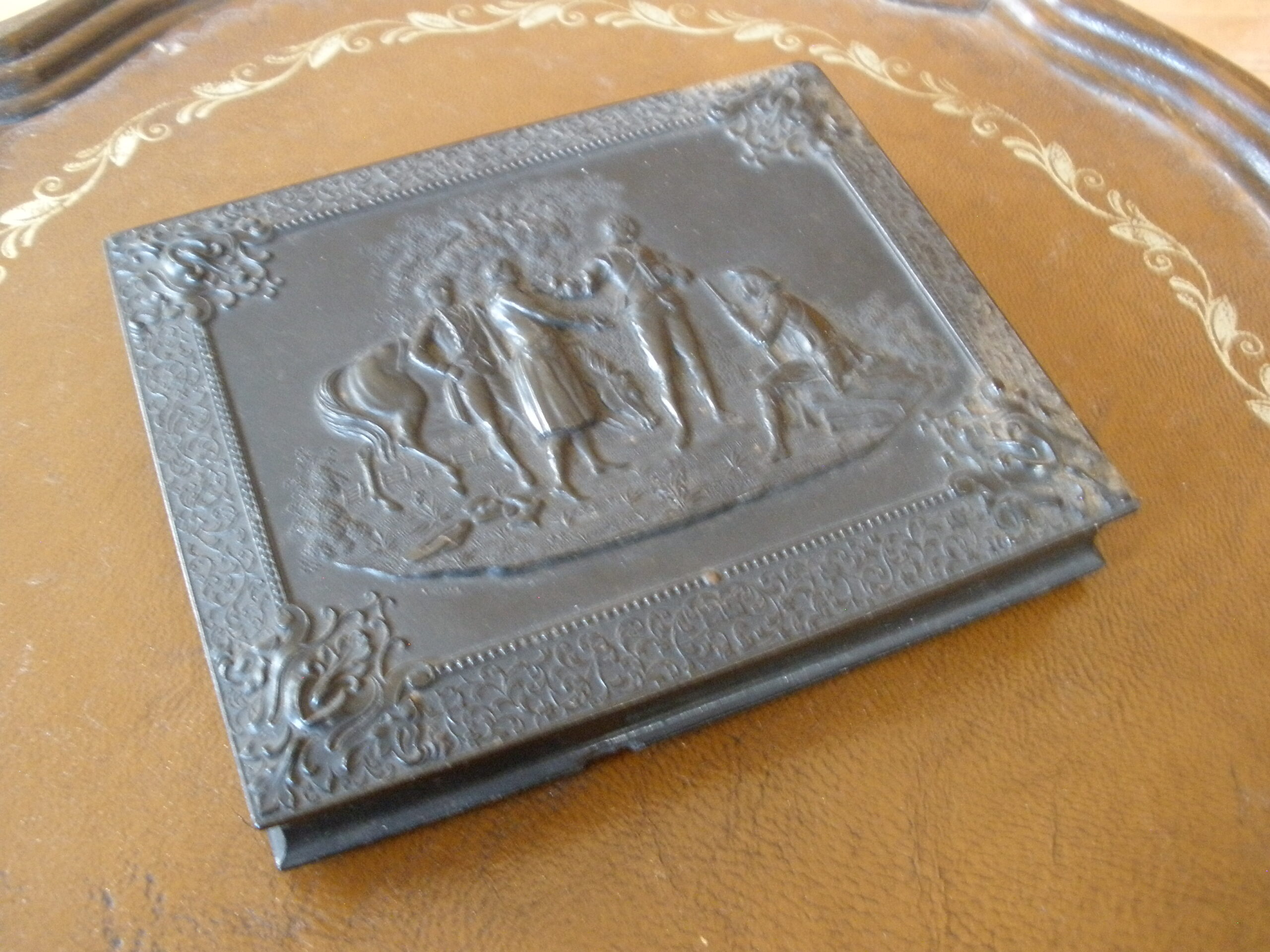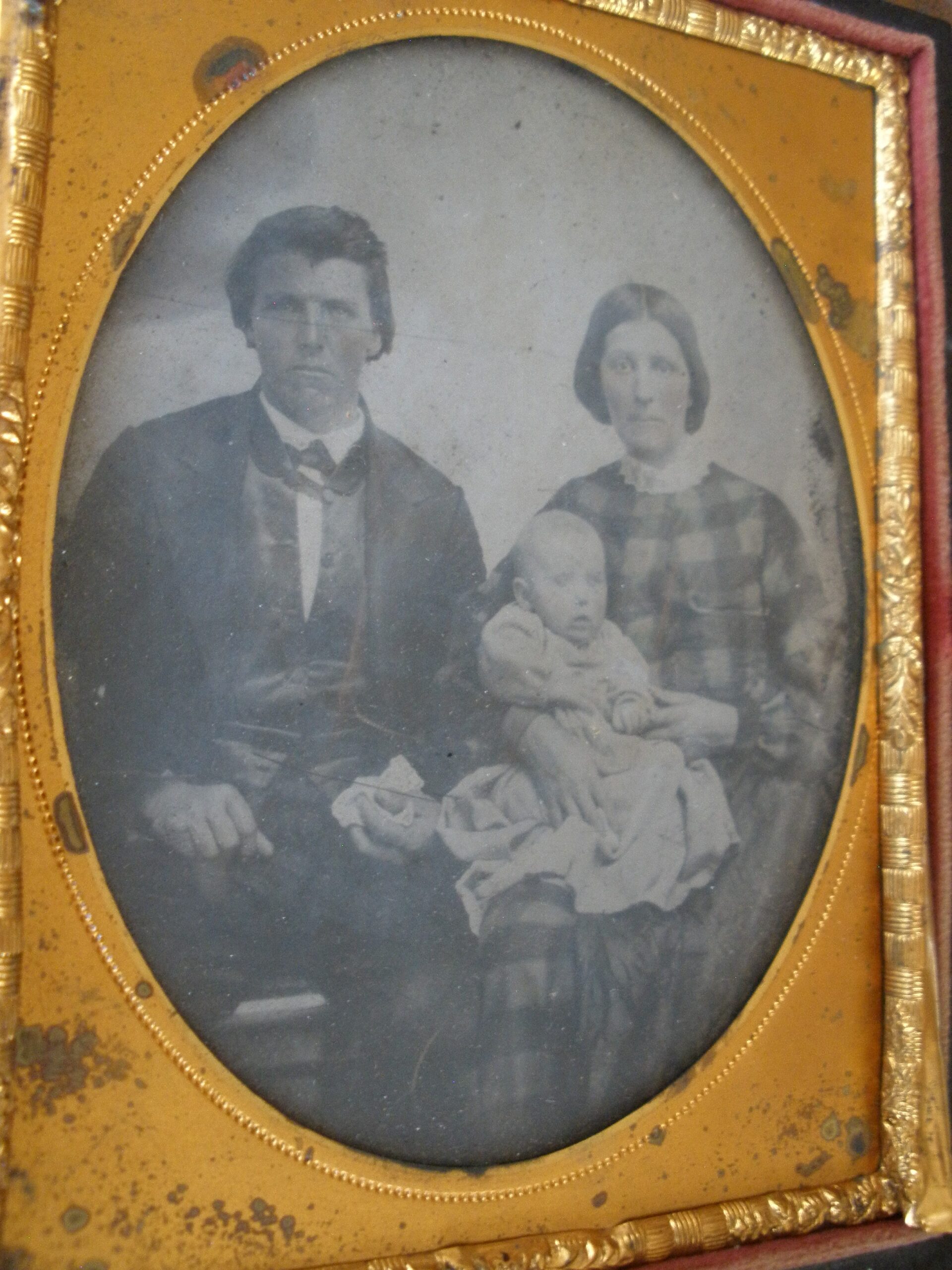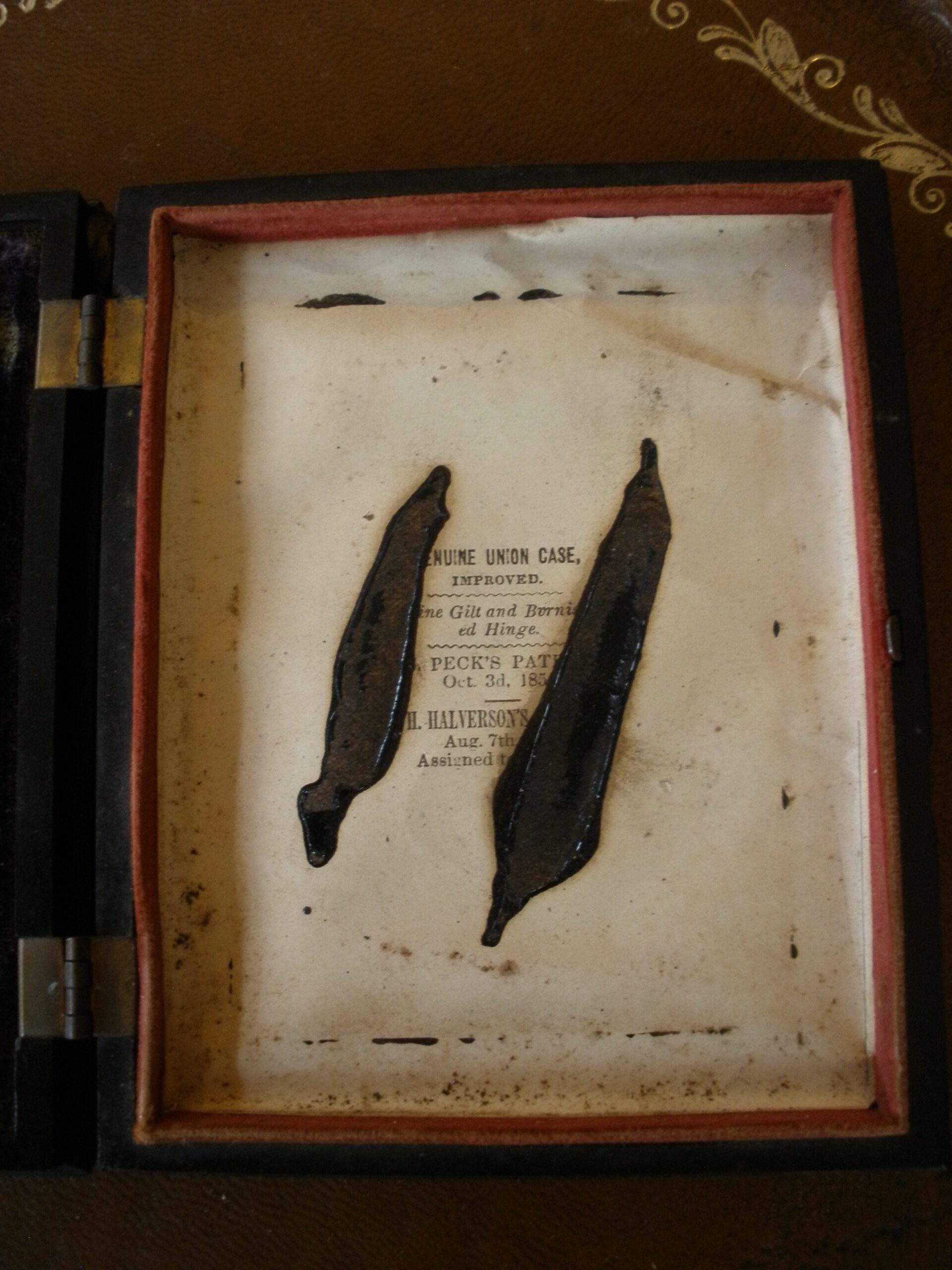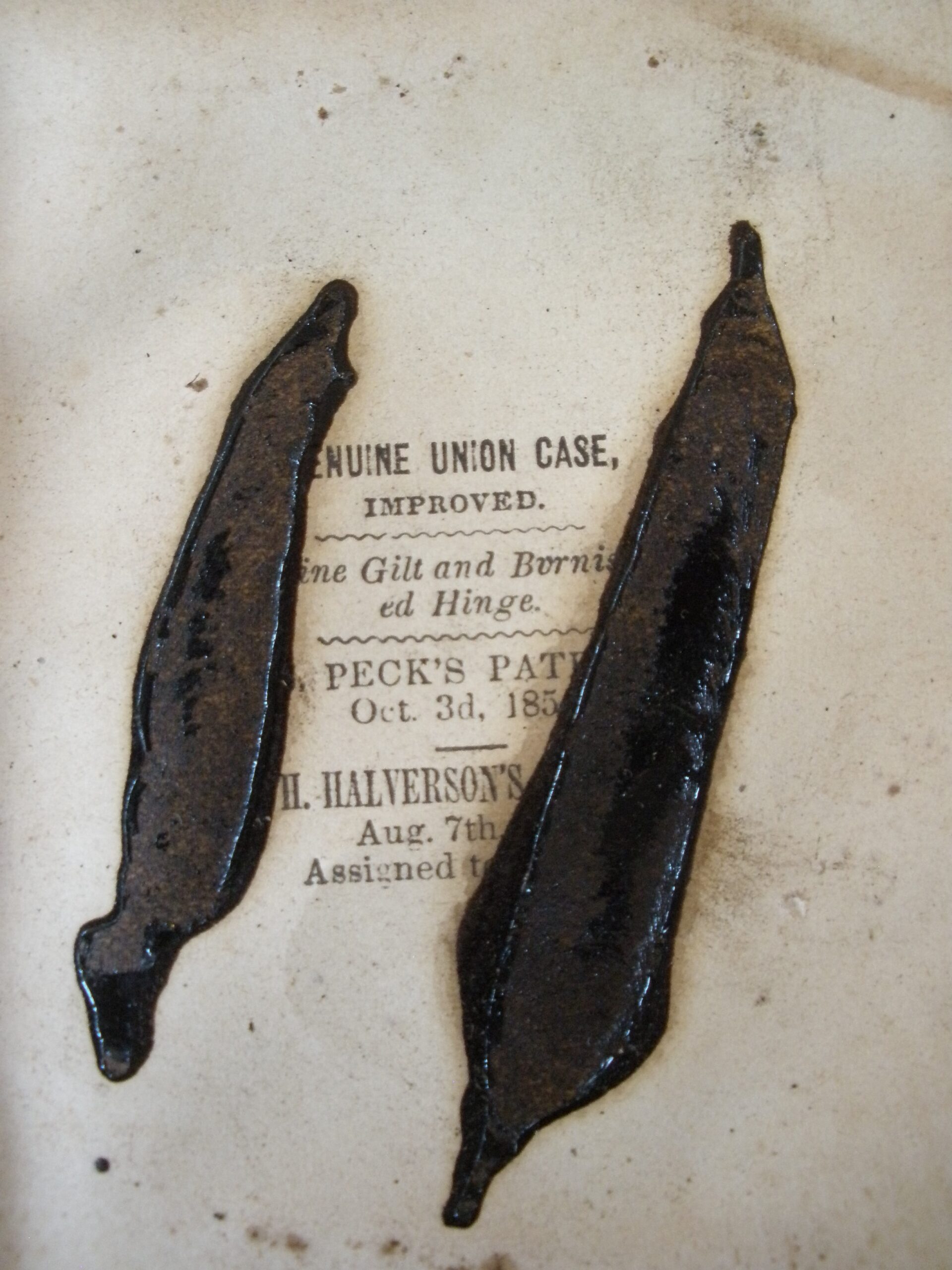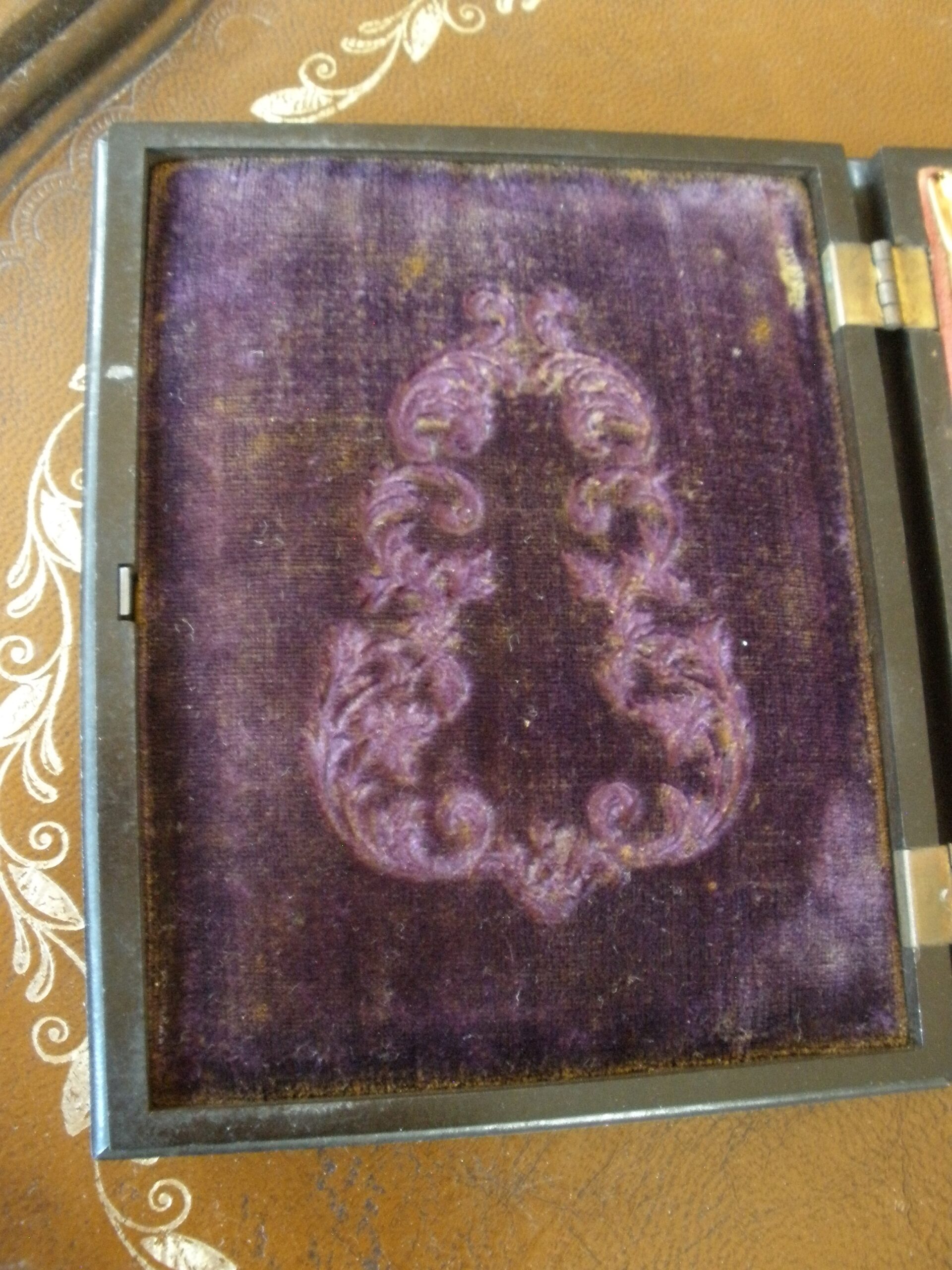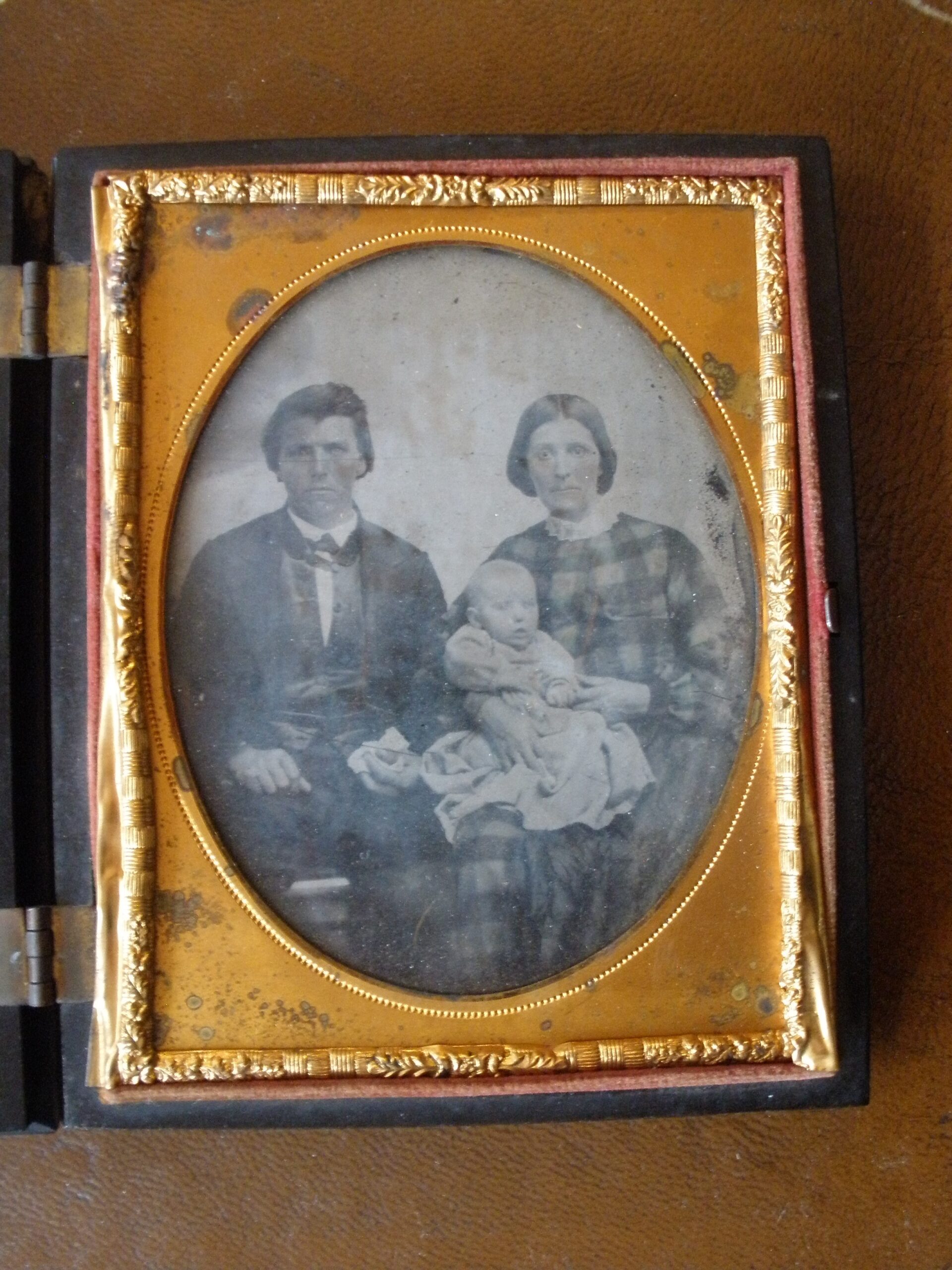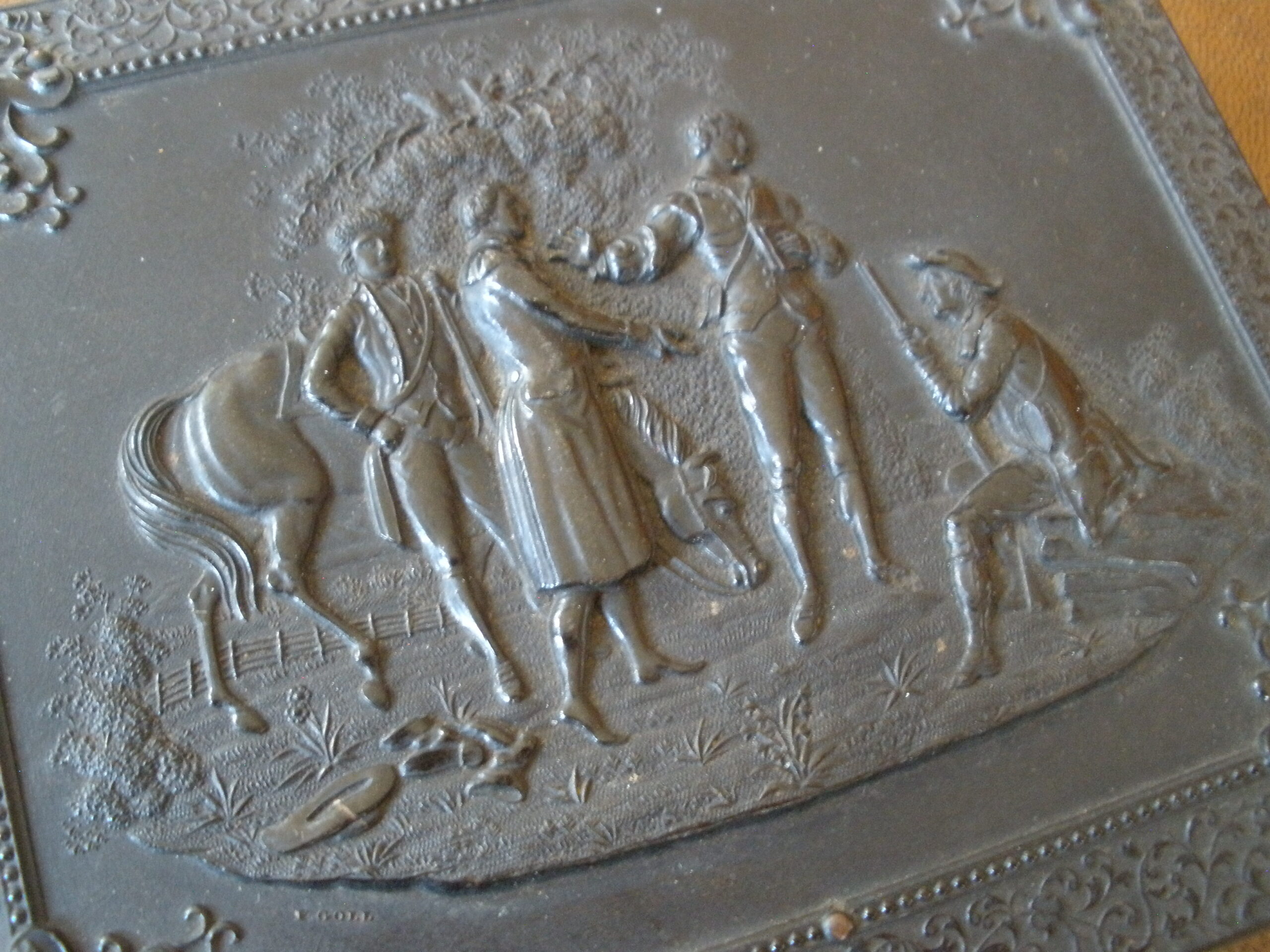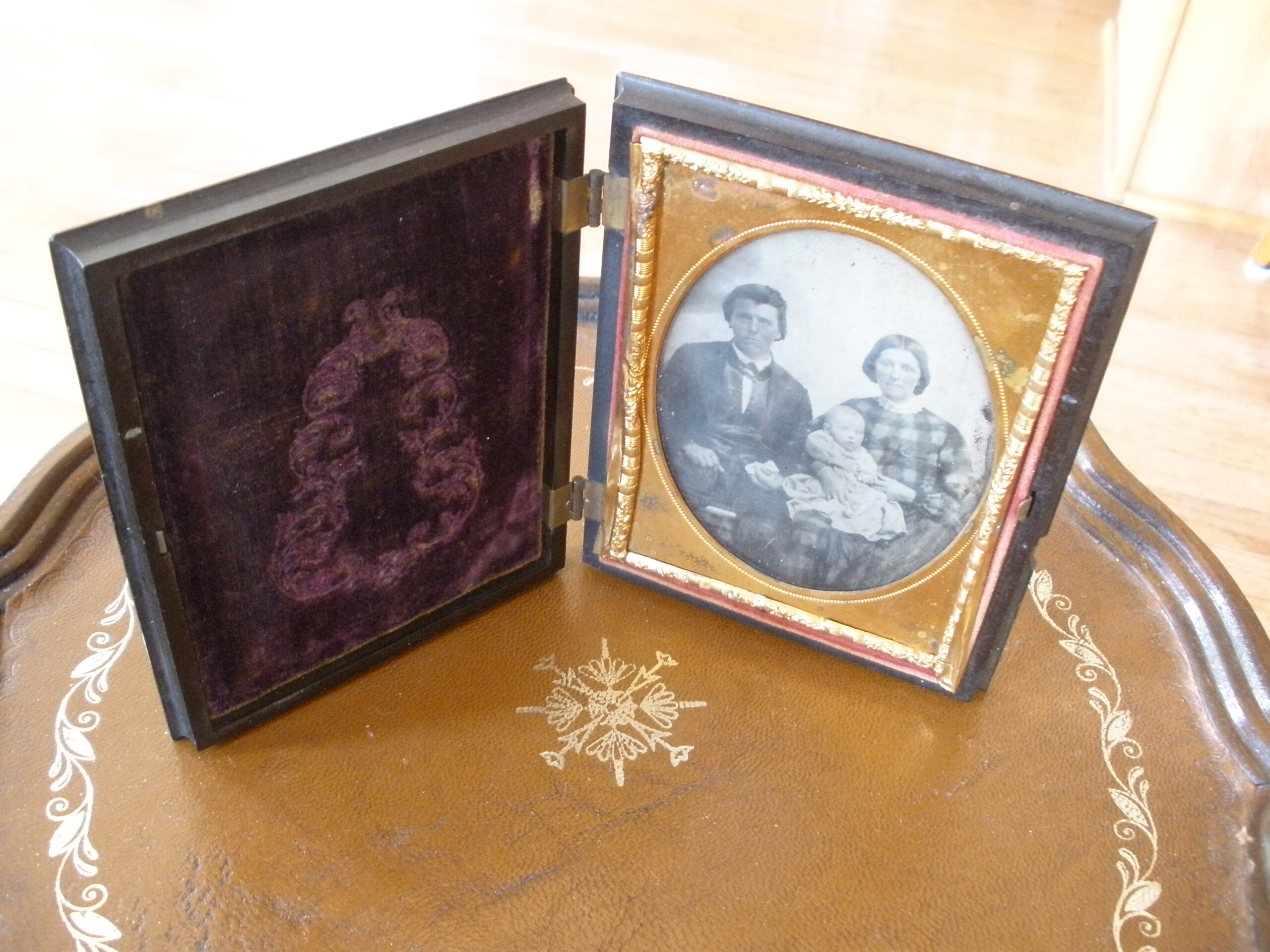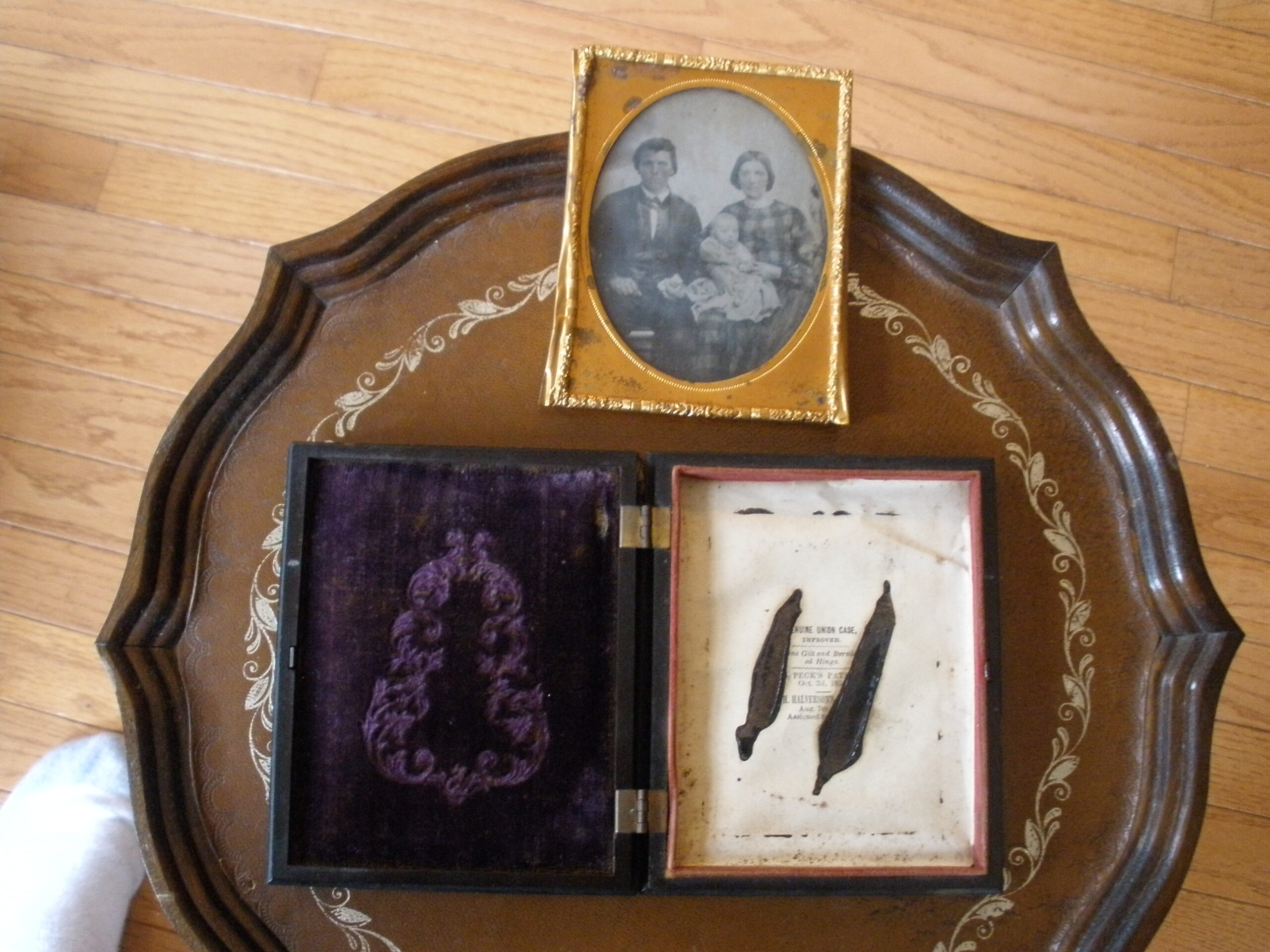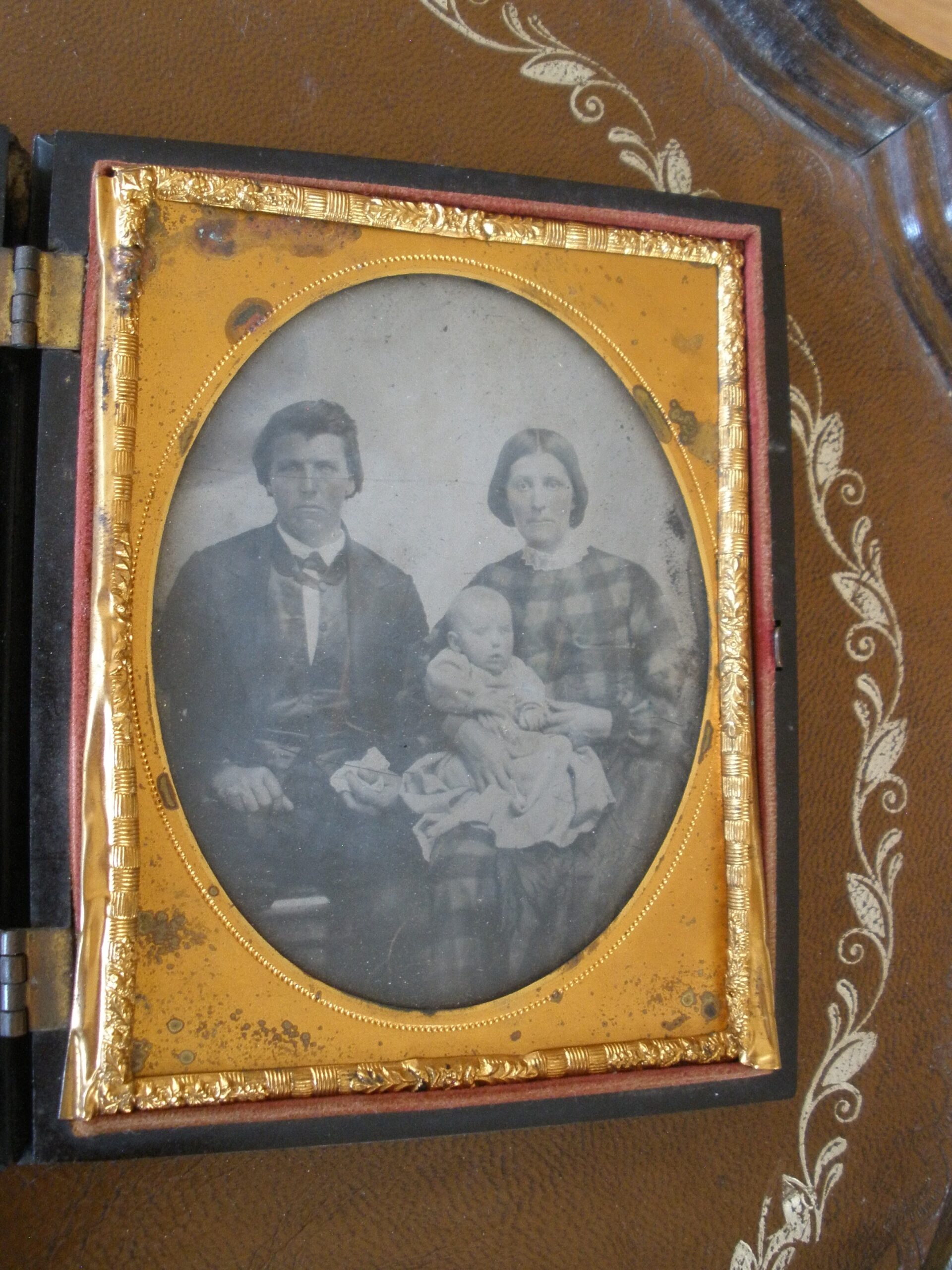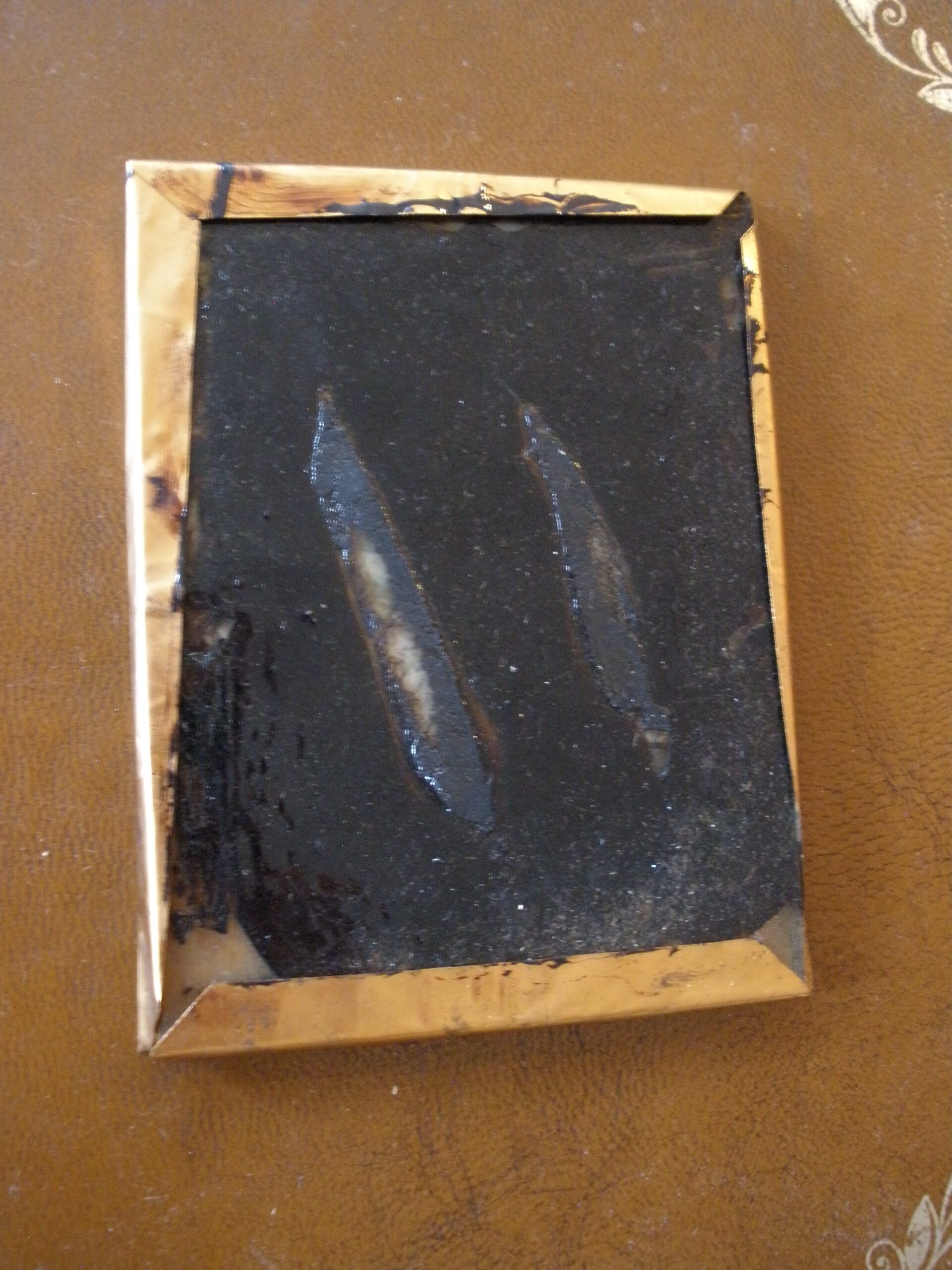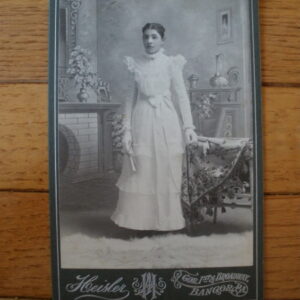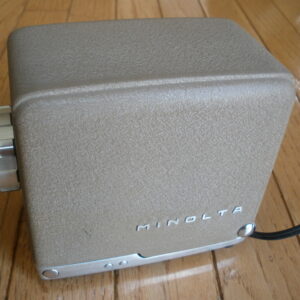For sale is a 1850s UNION THERMOPLASTIC CASE with CAPTURE OF MAJOR ANDRE DESIGN & 1/4 Plate AMBROTYPE FAMILY PHOTO. The union case is brown thermoplastic and features the Capture of Major Andre on the lid. The back of the case has a very rare geometric pattern. The interior of the case holds a beautiful royal purple velvet pillow, and retains the original manufacturer’s print: “Genuine Union Case, Improved. Fine Gilt and Burnished Hinge. S. Peck’s Patent Oct. 3rd. 1854, H. Halverson’s Patent Aug. 7th. 1855, assigned to S. Peck.” The case holds a 1/4 plate hand-tinted ambrotype photograph of a husband, wife, and infant child. The photo is on clear glass, and is encased in a period ornate oval brass mat protector. The case is in very good condition with a small chip on one edge of the case bottom. The case measures about 4 7/8 inches wide, 4 inches high, and 7/8 inches thick. A top notch historic and museum quality photography collectible.
The case lid features an illustration of the capture of British Major John André (1751–1780), near Tarrytown on the morning of September 23, 1780, shortly after entering into a conspiracy with the American General Benedict Arnold. His three captors were New York militiamen—John Paulding, Isaac Van Wart, and David Williams. André’s capture revealed Arnold’s plans to surrender the important patriot fort at West Point to the British. Had André been permitted to proceed to British-occupied New York, the British would have taken West Point and thus have been able to sail their vessels down the Hudson River to attack the Americans.
When an individual visited a photo studio in the late 1850s, he could choose the style of portrait—shiny reflective daguerreotype, glass ambrotype, metal tintype or a paper card photo. This is a key part of identifying a photo from the mid-19th century. If an image was taken before 1854, then it’s a daguerreotype, but if it was taken after that point, then it could be one of the others.
Daguerreotype was the first publicly available photographic process and was widely used between the 1840s and 1850s. Daguerreotypes photos have a mirror-like, highly polished silver surface and its dually negative/positive appearance when viewed from different angles or in raking light. Daguerreotypes are typically housed in miniature hinged cases made of wood covered with leather, paper, cloth, or mother of pearl. Daguerreotypes were produced on a thin copper metal support that had a polished coating of silver that was mirror-like. Daguerreotypes were sealed in glass for protection. The tintype replaced the daguerreotype in the 1860s because it developed much more quickly. A daguerreotype might take several hours to develop, but a tintype could be given to the sitter within minutes. Tintypes, patented in 1856, are actually on iron, not tin.
Ambrotypes, patented in 1854, are on glass. Backed with a dark substance (such as varnish or paper) they look positive, but when the backing starts to deteriorate, you can often see through the glass. This gives the image a ghostly appearance.
Gutta Percha consists chiefly of a hydrocarbon isomeric with rubber to make a hard durable thermoplastic substance. It is made from coagulated latex from trees which are found both wild and cultivated in Malaysia and Indonesia. Gutta Percha was America’s first plastic. In the context of antique photography, the cases made to house photos were called “thermoplastic cases”, “hard cases”, or “Union Cases.” The term Union comes from Peck who chose Union as the name to describe his process which was a union of shellac and sawdust. In 1854, Samuel Peck received his patent for inventing the thermoplastic process. He produced a hard durable plastic from a mixture of wood and shellac that was pressed into a mold. The result was a plastic-like product that still looks good one hundred and fifty years later.

